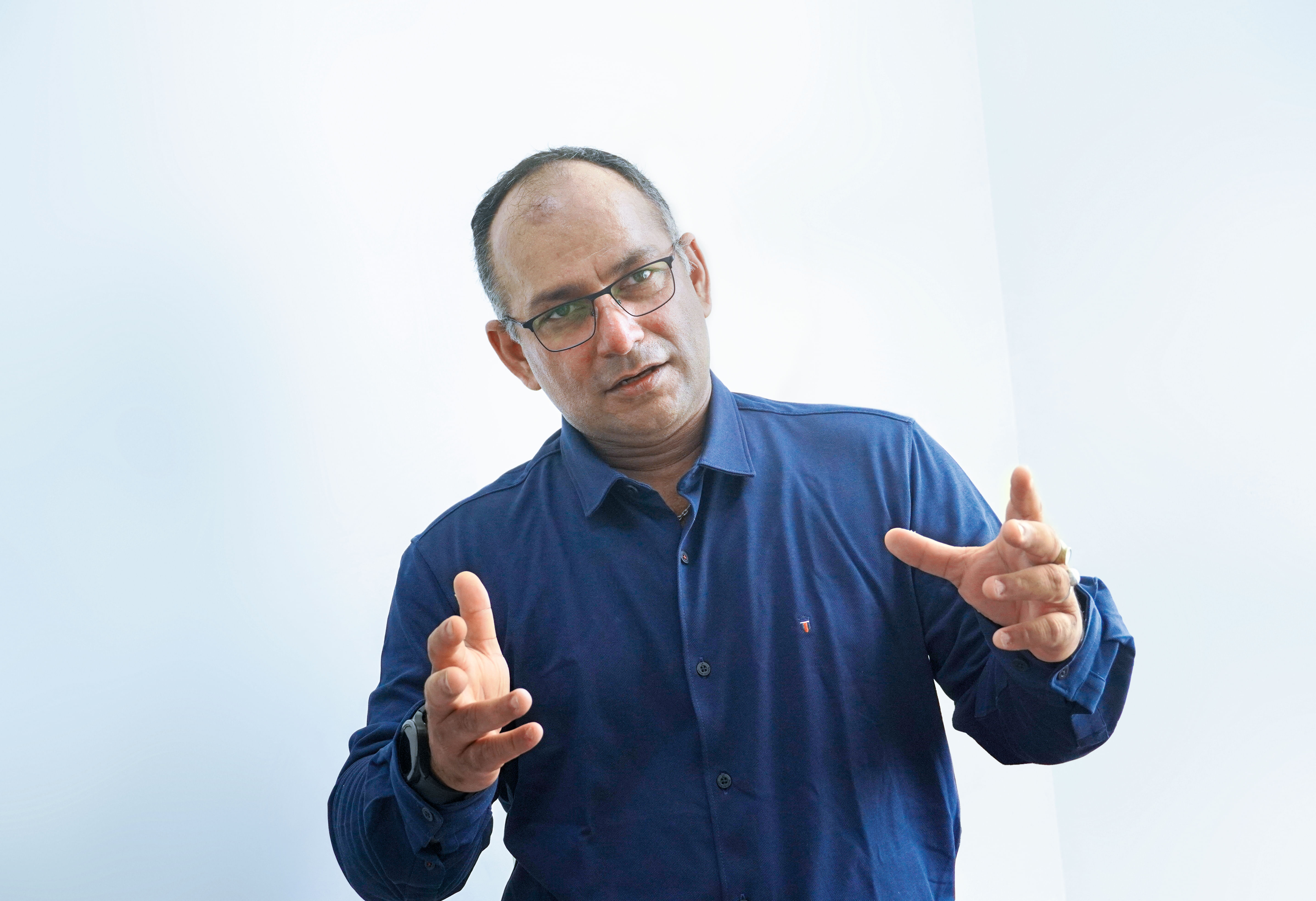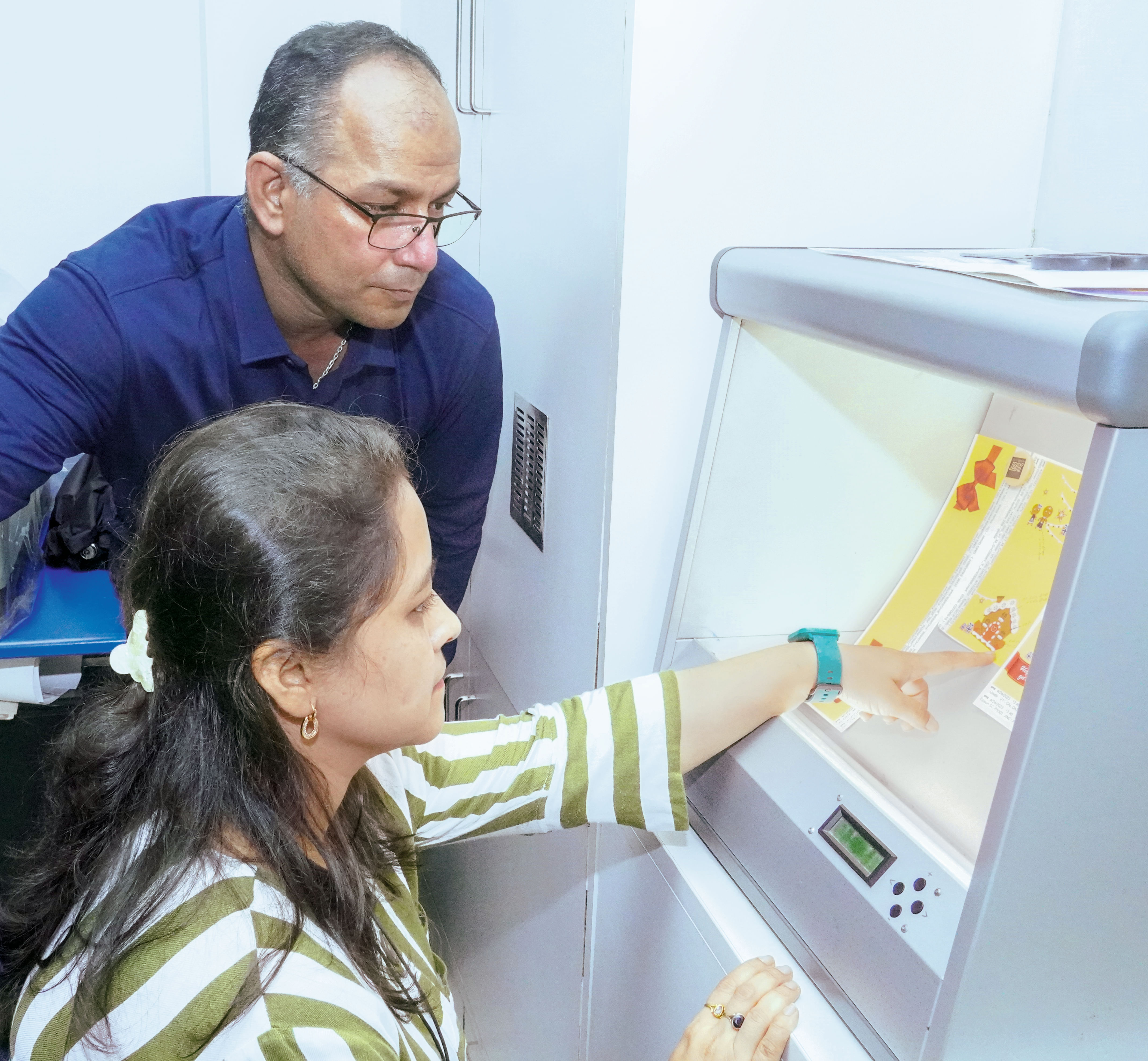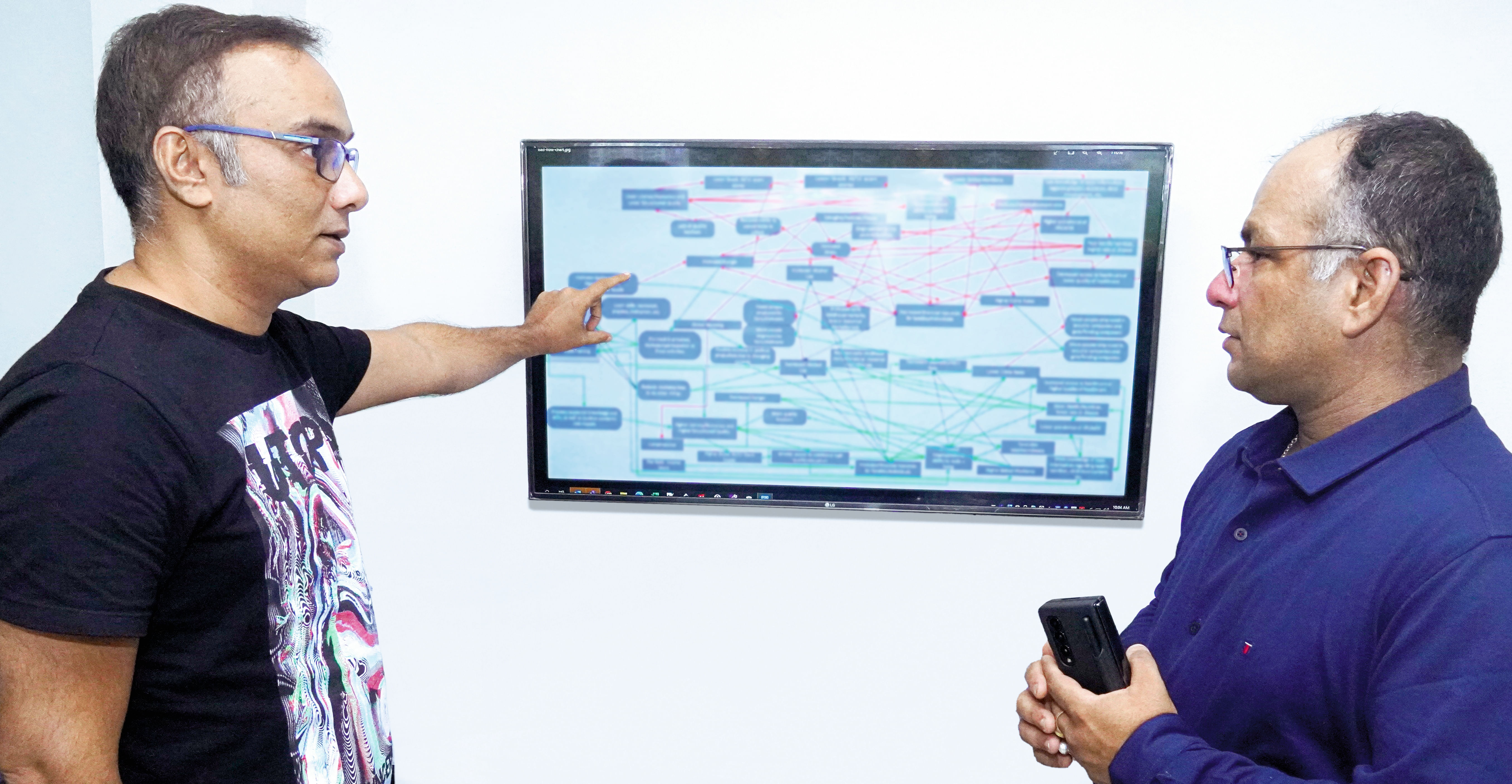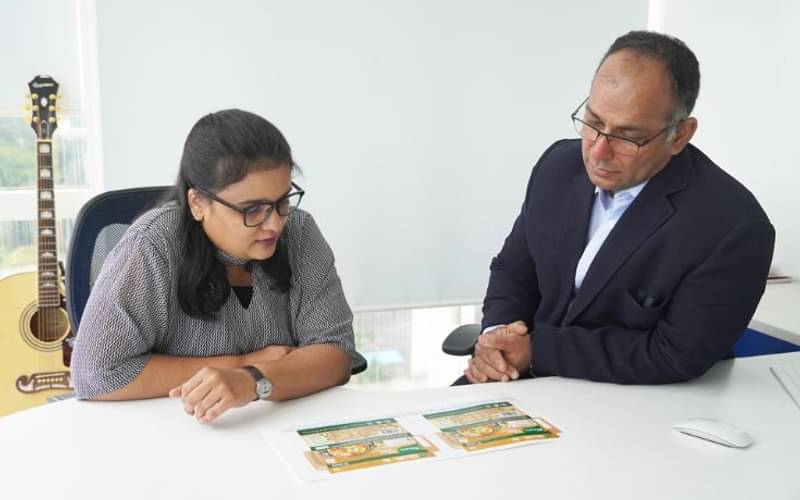Rahul Kundoo on pre-media technology adoption
Jose Thomas, who is the principal consultant at Future Schoolz speaks to Rahul Kundoo, the managing director at Linked2Brands (which is operated by Janoschka India). Rahul says, “We work with regional local brands in Europe, but also for global brand owners like Ferrero, Savencia and Unilever, across several regions and languages”
13 Nov 2023 | By Jose Thomas
Jose Thomas (JT): Let’s start with the pre-media landscape. How has pre-media been evolving globally?
Rahul Kundoo (RK): The pre-media landscape has undergone significant changes from its traditional pre-press roots, driven by the shift from print-driven media to a multi-channel world. As marketing communications expanded to various touchpoints, challenges arose, offering opportunities for those who embraced the changing landscape. Some pre-press houses struggled to adapt to this evolving world, leading them to either close down or transform their business models. The industry is continuously challenged to find innovative solutions to different
problems, making it fundamentally different from what it was even a decade ago.
JT: What are the key trends to watch for in this space?
RK: Previously, the industry adopted technology for basic standardisation and workflow improvement. Pre-media is evolving to move far beyond its initial emphasis of being primarily technology-driven. Now the focus is on solving business problems. The current expectations are to go beyond mere technology adoption.
JT: Please explain what you mean ...
RK: Now, pre-media must think beyond repurposing artworks, and address business challenges. The focus should be on delivering the message to consumers, as articulated by creative strategy teams across all channels and touchpoints, with no dilution. Now pre-media, more than ever, will be the glue that binds strategic creative agencies to production layers. Staying abreast of production nuances in a rapidly changing world and leveraging technology to solve core business issues will distinguish successful players from the rest in this highly dynamic landscape.
JT: What has changed for Janoschka in India?
RK: Well, we’ve achieved our initial objectives of creating a presence in India. Now, I’m here to steer the organisation as we navigate these very interesting and highly dynamic yet volatile times, but now as Linked2Brands, India.
JT: And globally?
RK: There has been a paradigm shift in the global business world, challenging established best practices and altering the way the game is played. Emerging markets challenge established ones, reshaping the landscape further. A decade ago, offshoring was a major trend, but now, technology-driven value propositions have taken the centre-stage, affecting perceptions of low-cost offshoring centres.
JT: How did you respond to all this?
RK: Amidst these changes, Janoschka and Linked2Brands have remained committed to measured and tempered responses, converting challenges into opportunities while prioritising customer interests. We rely on our decades of experience and instincts to provide long-lasting solutions to reputed brands, avoiding knee-jerk reactions.
JT: Excited about India?
RK: As India’s market wakes up to potential large-scale opportunities, our unwavering dedication to customer-driven decisions remains unchanged, both locally and globally.

Rahul Kundoo, managing director at Linked2Brands
JT: In what way?
RK: Today Linked2Brands is here to serve the domestic Indian market. We will bring all our collective experience to put together a value proposition that we hope the growing Indian market will find attractive.
JT: Does this signal a far-sighted approach of Janoschka, moving from its traditional bastion in tooling for gravure to much closer association with brands?
RK: That’s an interesting question. The approach taken is forward-thinking, expanding the scope much beyond traditional tooling while remaining rooted in its foundations. Linked2Bands was established to separate tooling for print from pre-media, yet keeping them connected. All pre-media eventually results in an artwork, the only moment of truth, and more so in packaging. Print tooling is an engineering step before the final one that eventually delivers the message. Being engineering-oriented, our brand solutions always are well-grounded in reality. We are easily able to see potential issues around ideas and what needs to be done to make the idea actually work very well. Any brand who has worked with us will agree that our solutions are among the best, and are happy to rely on our expertise. That is something we take pride in and will continue to maintain.
JT: Why this focus on the India market now? After being here for more than a decade without serving any true Indian customers?
RK: That’s not necessarily how we see it. Everyone realises now that it is important to be in India, but we built our presence a decade ago. Our strategy wasn’t solely focused on low-cost production, our decision to be in India was based on understanding the dynamics and long-term benefits. Over the years, we have witnessed significant changes, allowing us to make well-informed decisions that benefit all stakeholders involved. Our presence in India reflects our methodical approach towards everything we do. We have been here for quite a while, have built capability and understanding. Now we are ready to take our value proposition to potential customers in India who are eagerly competing with global brands and making their presence felt globally.
JT: On account of recent leadership changes, what priorities are going to be changed and where the new leadership will focus?
RK: The previous leadership laid the foundation and fulfilled global objectives. Now, the focus is on growth internationally but also locally. We will now present a strong value proposition to brands in India as well. The new leadership aims to offer end-to-end solutions to aspirational brands seeking reliable long-term partnerships, drawing from our vast experience of having delivered solutions across various countries, cultures and economies.
JT: What is your vision about the future of pre-media in the Indian context, and how do you plan to lead your team towards this vision?
RK: The future of pre-media in India will closely align with global trends, with the gaps narrowing. Developing teams with the right mindset and focusing on core capabilities that meet the evolving needs of brands will be my primary goal. Aligning brands, creative agencies, ourselves, and production partners downstream consistently, cost effectively and within most realistic timelines is going to be the focus for me. I have always believed that challenges and problems are, in fact, opportunities and I am very excited with what lies ahead.
JT: How will Linked2Brands plan to offer differentiation in the market from your peers who are well-entrenched in the Indian brand ecosystem?
RK: Well, firstly, although we are international players, we are not a large corporate entity driven by stock market dynamics like some other big players in this space. Neither are we a home-grown local pre-media company. We are somewhere in the middle. At the core we are a simple German family-owned company that grew over time because of the work we did.
JT: What kind of work? Please elaborate.
RK: We stand out from other players in the market due to our approach. While we may be categorised as empanelled suppliers alongside other pre-media companies, the differences we bring to the table are evident. We have been suppliers of choice globally for our credentials in print tool making and have also made significant inroads internationally in the brand ecosystem.
JT: What sets you apart?
RK: In addition to our obvious value proposition, what sets us apart from what could be seen as our peers is our collaborative mindset. We constantly strive to provide end-to-end solutions to brands by collaborating with other external experts. This collaborative approach benefits all parties involved, allowing us to introduce trusted partners with expertise in their respective fields to offer winning solutions. We bring in precision and an engineering mindset to brand ecosystem requirements, we also bring in other specialists wherever it is relevant and apply our collective skills on the larger canvas of ideation and creativity.

Pre-media and artwork to bridge the gap between production and technology
JT: Good response?
RK: We know for sure that brands like it. When ingenuity is weaved with realistic thinking, by the right kind of people, and if it is all well-engineered, the results are always going to be predictable and desirable.
JT: How will you strike a balance between ever-demanding brands and always on print production partners or media companies who always breathe down the neck for perfect artworks?
RK: Our existence relies on complexity. Whenever there is a challenge in delivering brand intent to a consumer, that’s where we step in. We have strong credentials in problem-solving. The essence of our work lies in leveraging our legacy and proven track record globally to strike a balance between creative freedom and seamless production. Our involvement fosters trust from all parties involved, enabling fruitful discussions and collaboration. Brand owners rely on our technical guidance, converters appreciate our understanding of their needs, and other stakeholders, including creative agencies and technology providers, value our expertise in representing their interests. This extends to high-end suppliers of specialised services, fostering a collaborative approach for optimal outcomes.
JT: How will you satisfy the printers and packaging producers who ultimately consume the artworks you produce?
RK: The bottom line is we will continue to fulfil needs of all stakeholders upstream and downstream by offering bespoke integrated solutions based on all our experience and expertise, with optimised use of technology, human and material resources available across all our locations globally.
JT: Serving the printers and packaging converters globally, what is the latest trend in artworking? Many of the brands are keen on in-housing the adaptations and artworking, even designs to some extent. Is this an India specific trend?
RK: No, not really. The shift towards in-housing artworking and adaptation work is a reaction to changing conditions over time. Brands and design companies prioritise quality output, and the decision to in-house may stem from a trust deficit in outsourced solutions. But at a certain scale of operations brand owners will realise that they can’t have the competence in all its depth to manage the complexities that are involved in the current multi-channel environment.
JT: So, it’s all about a value proposition ...
RK: Yes. If a value proposition is offered which can assure, demonstrate, and deliver quality, particularly from suppliers who offer these as a core competency, we find that both, brand owners and design companies, are happy to partner with such suppliers. Our presence is a testament to the fact that trusted partners can enable the brands to aspire for more by being leaner and agile.
JT: What role technology plays in delivering pre-media services to brands?
RK: This is one of my favourite topics, I can even write a book about it. The critical role of technology in our rapidly changing environment cannot be overemphasised. From implementing industry-standard technology to deploying and developing solutions, it plays a pivotal role in finding answers to the challenges we face. We have already deployed many technology solutions to support brand managers in reducing their clutter, increasing visibility and managing things with clarity. In addition to being a powerhouse ourselves in deploying technology for the benefit of our customers, we have an impressive line-up of technology partners who are best in the world in their chosen domains.
JT: How will you take advantage of the big elephant that disrupts every industry now, AI?
RK: Yes, AI is indeed the big elephant in the room, and it’s often confused with automation. Automation involves using intelligence, often natural, to streamline tasks and processes without manual intervention. AI, on the other hand, relies on an artificial layer of technology intelligence to analyse situations and make decisions autonomously. The current discussions about AI stems from its complex nature and lack of full understanding. When properly understood and applied, AI can be a valuable asset, but if not, it can lead to adverse consequences. It’s a double-edged sword that can be both beneficial and harmful.
JT: Will AI automate pre-media services any time soon?
RK: Automating pre-media with AI is a possibility, but it requires careful consideration of what aspects to automate and the ultimate purpose it serves. We are actively exploring this space and AI is definitely in our radar.
JT: With digital taking over and eating the largest share of the marcom pie, how will print keep its head high in the future?
RK: Print media has always held its ground and will likely continue to do so in the foreseeable future. The exponential developments in the industry have expanded print advertising properties, and the boom in retail is further fuelling growth of packaging. This resilience indicates that print and packaging media is not likely to disappear any time soon, and there remains a strong presence and demand for packaging materials in various sectors. The dynamics might change, but essentially packaging and digital printing will lead the print medium.

AI is the big elephant in the room, and it’s often confused with automation
JT: How so?
RK: A look around our households will demonstrate that a printed package stays with a consumer a lot longer than a few seconds of digital content. It has its own unique value and that will not be given up. People are not going to throw away the tactile sense of print anytime soon.
JT: How will you plan to enter into the Indian market, what story do you have for the Indian brand managers?
RK: We want to work with aspirational brands who need help to overcome challenges in brand message delivery for whatever reason. We have proven capability to shrink timelines and deliver solutions on a global scale, ensuring a hassle-free experience. We do this not only for several regional local brands in Europe, but also for global brand owners like Ferrero, Savencia and Unilever, to name a few, across several regions and languages.
JT: Many Indian brands are looking to scale their business on a global scale as well ...
RK: We would be delighted to offer the complete gamut of our services to Indian brands that are looking for a reliable pre-media partner on a long-term engagement model. We take complete ownership of the process and work as true partners helping brands realise their ambitions. We hope Indian brand managers find value in that.
Challenges for a pre-media company
I believe pre-media companies will continue to play a vital role, acting as a perfect bridge between print producers/publishers and ad/design agencies and brand owners in this evolving landscape. Within the domain of pre-media, we have now evolved into something more like a pre-channel to manage the bridge between the creative intent and whatever end it seeks to serve. Pre-press is the least of our problems these days.
Now in the multi-channel world of today there are several complexities in delivering synchronised creative intent. There is always a problem there and there are always challenges of synchronising a consistent image of a brand and its message. This makes pre-media companies who can understand the nuances of these times more relevant than ever before because the need to harmonise brand appearance and present content consistently across all channels in the media array is not only growing but is also getting increasingly challenging.
There needs to be an intermediary between creative processes and production, stronger than ever before, to deliver messaging using state-of-the-art techniques to create assets with unprecedented scale and consistency across media, channels, languages and even regions. This is the challenge which pre-media must shoulder.
Janoschka remains dedicated to delivering top-notch print tooling solutions, while Linked 2Brands continues to partner with brands to identify and implement optimal brand solutions. With a comprehensive understanding of constraints in both creative and production processes, we offer creative teams the freedom to express their ideas while ensuring a seamless transition to production. We take creative intent and adapt it to whatever the channel requirement may be. This approach has proven successful and will remain unchanged going forward. That’s our way of managing things and we see no reason to shift.


